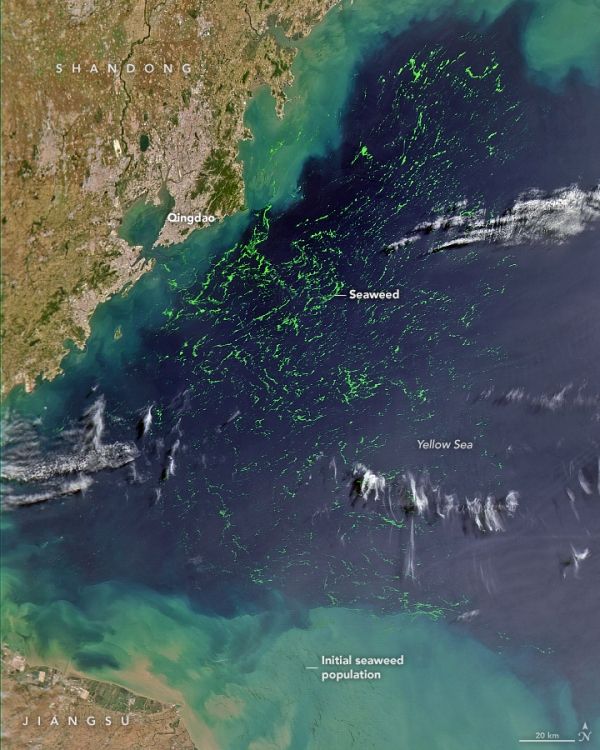Algae made headlines around the world in June 2008 when an enormous bloom choked the coastal waters off Qingdao, China, the site of sailing events for that year’s Olympic Games. More than 700,000 tons of algae were cleared in time for competition that year, but similar “green tides” have returned every summer. In June 2021, algal slicks painted the Yellow Sea bright green during the region’s largest bloom on record.
The recent bloom is visible in this natural-color image, acquired on June 19, 2021, with the Hawkeye sensor on the SeaHawk CubeSat. Images from SeaHawk and other satellites help scientists document the origin and distribution of blooms in the region as they work to untangle the factors causing the large outbreaks.
The species in the image is Ulva prolifera, a common green macroalgae (seaweed) that is not toxic to people or marine life; in fact, this “sea lettuce” is edible and nutritious. But long mats of it can still have detrimental effects on marine ecosystems. For example, decaying algae can deplete water of oxygen and cause “hypoxic” conditions that cause fish kills. The mounds of seaweed that wash up along the coastline can be unsightly and costly to remove.
Continue reading at NASA Earth Observatory
Image via NASA Earth Observatory


